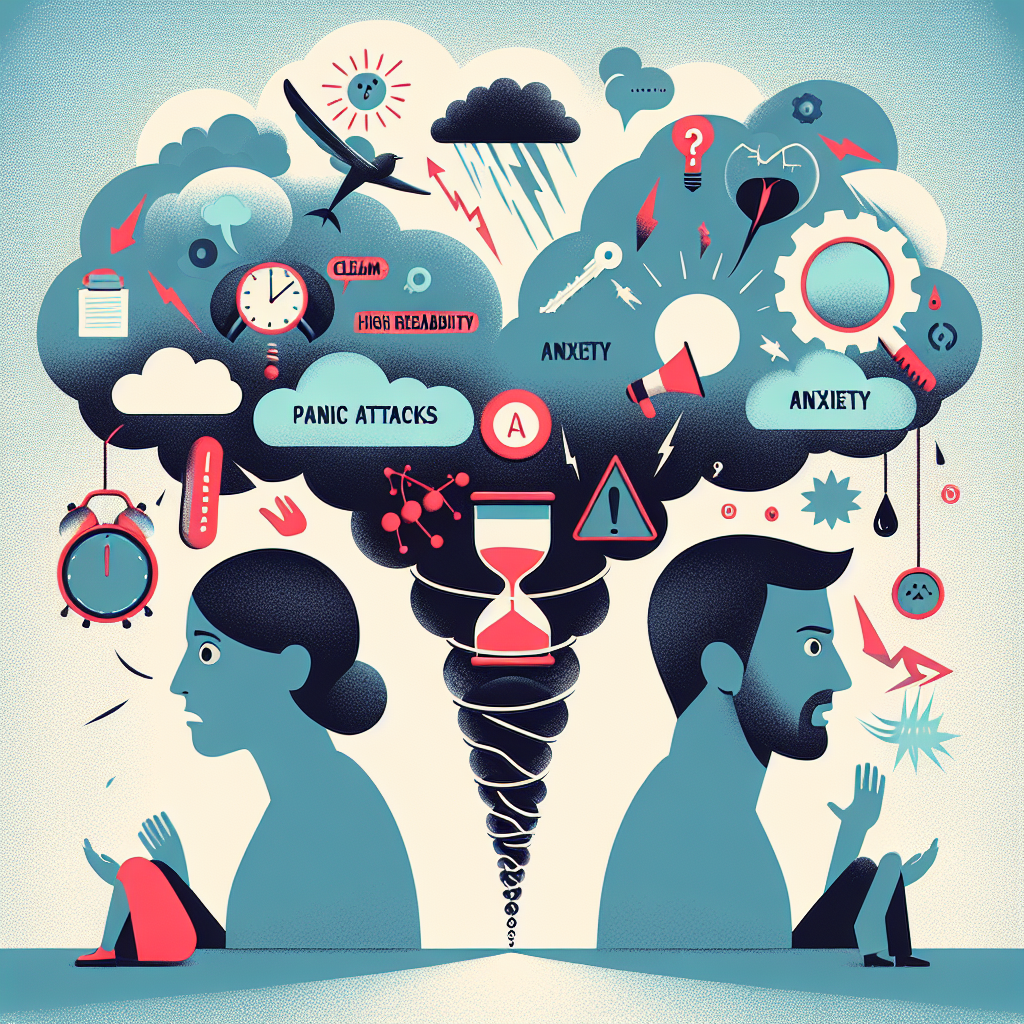Understanding the difference between panic attack and anxiety attack can help you recognize what you or someone else is experiencing and choose the most effective coping strategies. Both involve intense fear or distress, but they differ in onset, duration, triggers, and typical symptoms. This article breaks down those distinctions, explains when to seek help, and points to reliable resources for further reading.
Anxiety attack vs panic attack: core distinctions
One useful way to frame the contrast is to look at how symptoms begin and peak. Panic attacks tend to come on suddenly, reach a peak within minutes, and include intense physical sensations like heart palpitations, chest pain, dizziness, or a sense of losing control. Anxiety attacks are often linked to a specific stressor and build more gradually, with worry and tension that can persist for hours or days.
When comparing anxiety attack versus panic attack, remember that an anxiety attack often feels like prolonged, focused worry with physical tension, while a panic attack is a short-lived but overwhelming surge of fear. The term anxiety v panic attack is sometimes used by clinicians and self-help writers to clarify this practical difference, though language varies across sources.
Symptoms, triggers, and typical course
Panic attack and anxiety attack difference shows up most clearly in symptom timing and intensity. Typical features include:
- Panic attack: sudden onset, intense fear, short duration (usually minutes), strong physical symptoms (sweating, shaking, breathlessness), possible derealization or depersonalization.
- Anxiety attack: develops in response to perceived threat or stressor, more prolonged, characterized by persistent worry, muscle tension, irritability, trouble concentrating, and milder physical signs.
- Overlap exists: both can cause elevated heart rate, difficulty breathing, and sleep disturbance.
Because of overlap, people often ask whether is an anxiety attack the same as a panic attack. The short answer: not always. They can feel similar, and someone with panic disorder may also experience extended anxiety between episodes. For guidance on physical symptoms such as trembling or shaking during anxiety, see practical strategies like those described in how to stop shaking from anxiety.
Diagnosis and when to seek help
Clinical distinctions matter for diagnosis and treatment. Panic disorder vs anxiety (generalized anxiety disorder, or GAD) are separate diagnoses with different criteria. Panic disorder involves recurrent unexpected panic attacks and persistent concern about additional attacks, while GAD is marked by chronic, excessive worry across many areas of life.
If you’re exploring difference between anxiety and anxiety attack or the difference between anxiety and panic attacks, a mental health professional will assess the pattern of symptoms, triggers, severity, and functional impact. Treatment options may include cognitive behavioral therapy (CBT), medication, stress-management techniques, and lifestyle measures. For an authoritative overview of anxiety disorders and evidence-based treatments, see the National Institute of Mental Health’s resource on anxiety disorders: NIMH overview of anxiety disorders.
Practical strategies for coping
Whether you’re dealing with a panic attack and anxiety attack difference is mostly about how you respond in the moment and how you manage long-term triggers. Helpful immediate strategies include controlled breathing (box breathing or 4-4-4 patterns), grounding exercises (5-4-3-2-1 sensory method), and a calm place to sit until symptoms subside. Longer-term strategies focus on sleep, exercise, limiting stimulants, and therapy.
Quick checklist
- Recognize onset pattern: sudden (panic) vs gradual (anxiety).
- Use breathing and grounding to reduce acute symptoms.
- Track triggers and symptom patterns for clinician discussion.
- Consider therapy if episodes are frequent or disruptive.
Common questions
Q: What is the panic attack and anxiety attack difference in treatment?
A: Treatment overlaps—therapy and lifestyle changes help both—but panic attacks may be treated with specific interventions for acute episodes and medications targeting panic symptoms, while generalized anxiety often benefits from long-term CBT and stress-management plans.
Q: Can one lead to the other?
A: Yes. Recurrent panic attacks can create ongoing worry about future attacks, contributing to chronic anxiety. Likewise, prolonged anxiety can increase sensitivity to bodily sensations and occasionally trigger panic episodes.
Q: Is anxiety attack versus panic attack a formal diagnostic split?
A: Not always in clinical language—“anxiety attack” is less formal and used colloquially, while panic attack and panic disorder have specific diagnostic criteria. Still, understanding anxiety versus panic attack in everyday terms helps with self-care and communication with providers.






